
The purpose of this study was to develop and validity Competitive State Anxiety Scale for Taekwondo Form athlete(CSATF). The participants were composed of the 48 Taekwondo Form athlete to explore sub-factors of Competitive State Anxiety for Taekwondo Form athlete. The data were collected by an open-ended questionnaire and interview. The participants were composed of 257 national Taekwondo Form athlete to develop Competitive State Anxiety Scale for Taekwondo Form athlete. This 157 athlete data were used for items analysis, reliability analysis and exploratory factor analysis. And 100 athlete data were utilized for confirmatory analysis. Also convergent validity, discriminant validity, predictive validity latent mean analysis of CSATF were performed The results of this study were as follows. Firstly, the results revealed that the four general dimensions were identified such as cognitive anxiety, somatic anxiety, state of confidence, environmental anxiety. Secondly, CSATF comprised cognitive anxiety(5 item), somatic anxiety(5 item), state of confidence(5 item) and environmental anxiety(6 item). Thirdly, convergent validity, discriminant validity and predictive validity, the multi-group analysis according to gender examined validity of CSATF.


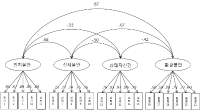

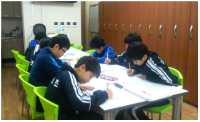
The purpose of this study was to verify the effect on elementary school students in the exercise start stage by performing a sport psychological skill training to improvement of psychological skill and life skill. Participants were eight elementary school boys volleyball player. The program consisted of psychological skills and life skills in educational counseling model of Visek et al(2009). It was conducted 40-50 minutes a session in total for 22 sessions. Data was collected through a psychological test, worksheet and participant observation, in-depth interviews. The collected data was analyzed to verify difference by paird t-test after pre-middle-post test and to extract meaningful data category. Quantity analysis showed that a result of sport psychological skill test proved a significant difference in willingness to overcome, confidence, concentration, anxiety regulation. Life skill test were no significant differences in all factors. However, the rise of scores was observed on result of the pre-middle paired t-test of life skill during season. Quality analysis showed possibility of goal setting, concentration on the routine, decrease of competitive anxiety, increase of positive thinking, self-understanding and understanding of others, promotion of communication among team members. This sport psychology skill training had a significant effect on the psychological skills of elementary players change. But it seems to be necessary life skills in a more through review of the information.


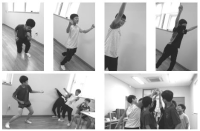

The purpose of this study was to find which percentage of 1RM for squat to improve the result of squat jump most effectively after plyometric training with different percentage of 1RM for squat. 24 men in their twenties were measured 1RM for squat and separated in 4 groups by 6 participants. Group A, B, C, and D used 0, 15, 30, and 45% of 1RM, respectively in the plyometric training. All groups had 1 hour training 3 days per week for 8 weeks(24 sessions). This study designed to increase the number of sets of exercises gradually. In week 1 and 2, participants trained 1 set of plyometrics with no load. The number of sets increased 2 to 4 in the week 3-4 to 7-8. The jump height(cm) and vertical impulse(%BW) of squat jump before and after plyometric training were measured by 3D motion capture system and force plate. All 4 groups showed the improvement of squat jump height and vertical impulse, but specially group B was most improved(p<0.5).

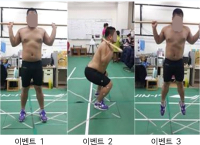


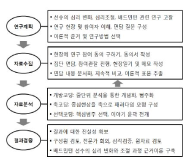
This study was purposed to explore psychological change and regulation process during badminton competition. The data were conducted using group interviews and participation observations who 18 K college badminton players. The data were analyzed using open, axial, and selective coding based on grounded theory method (Strauss & Corbin, 1998). The results were as follows: Open coding results, 89 concepts, 44 subcategories, and 18 categories emerged as psychological change and regulation process during badminton competitions. Axial coding results, the categories are showed structural relationships such as performance, score, psychological momentum, the importance of competition, court environment, physical condition, competition strategy, psychological preparation, past experience, outcome expectation, psychological disturbance, psychological skills, game situation-changing strategy, support-seeking strategy, significant others' behavior, the opponents' behavior, psychological resilience, and maintenance psychological disturbance. Selective coding results, core category of this study was revealed to maintain psychological homeostasis. Environmental context during badminton competitions causes specific situations and events that evoke psychological disturbance. In turn, a player seeks mental and behavioral strategies to maintain psychological homeostasis. There is psychological homeostasis mechanism during badminton competitions for peak performance. Development of proper interest for psychological homeostasis will be improved through this research approach in sport psychology.


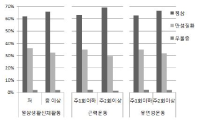
This study examined the association between physical activity (PA) and the prevalence of chronic disease and chronic depression. Additionally, the relationships between PA and health-related quality of life (HRQoL) among general population, categorized by healthy, chronic disease and depression were investigated. Cross-sectional data includes 9,739 participants (4,351 males, 5,659 females, over 19 years old) who completed physical activity, chronic disease and HRQoL questionnaires from The Fifth Korea National Health and Nutrition Examination Survey (KNHANES). Complex samples frequency, descriptive, cross-tab and logistic analysis were used. Estimated prevalence of chronic disease and depression were significantly different between PA levels and frequency. Based on odds ratios (OR) and 95% confidence intervals (CI), participating in lower levels of daily PA including less resistance and flexibility exercise were associated with an increased likelihood of chronic disease. Less frequency of resistance PA was also associated with an increased likelihood of depression. Estimated prevalence of HRQoL was different according to PA in the healthy and chronic disease populations. Adjusted OR and confidence intervals represented through lower levels of daily PA and less frequency of resistance PA were associated with an increased likelihood of poor HRQoL in the chronic disease population. No significant OR between PA and HRQoL in the depression population was observed.


The importance of a health problem is emphasized in youth. Unfortunately, healthy activity physical education is not well utilized and is not popularly being researched. In order to improve these problems, this study attempted to explore the validity and applicability of SPARK program by designing and practicing the SPARK based P.E. classes. This study employed a mixed method research method based on a qualitative research strategy. Physical activity and physical fitness level were measured by accelerometers and FITNESSGAM. Additionally, empirical data were collected and analyzed by both Photovoice technique and recording. Findings of this study were divided into designing and practicing perspectives. First of all, the PE classes based on SPARK program was designed by 2009 national physical education curriculum and studies associated with the SPARK program. Further, I attempted to specify teaching strategy for enhancing physical activity level, power of execution and motivation. Second, PE class which has higher physical activity level, more participation and achievement, and successful fulfillment were emerged as consequences. Based on the study results, I discussed the validity and applicability of Physical Fitness based SPARK program and proposed suggestions for future studies.


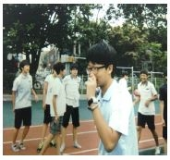






PURPOSE This study investigated the perceptions and experiences of collegiate student-athletes with mental health concerns who are receiving sport psychology services. METHODS A total of 196 college student-athletes (98 male, 98 female) were recruited for the quantitative phase, while 14 athletes from 7 sports participated in the qualitative phase. This integrated approach sought to provide a comprehensive perspective on the research subject. The quantitative participants answered scales for depression (CES-D), anxiety (GAD-7), social support (NCAA RSSS), and mental help-seeking attitude (MHSAS), and the qualitative participants underwent in-depth interviews using a semistructured questionnaire based on a socioecological model. Quantitative data were examined using confirmatory factor analysis, reliability measures, independent t-test, and one-way analysis of variance via SPSS 28.0 and AMOS 28.0, and qualitative data were inspected through content analysis and expert meetings. RESULTS First, higher levels of depression, anxiety, and perceived social support were reported by female athletes as opposed to male athletes. Second, athletes in individual sports reported higher levels of social support than those in team sports. Third, athletes who planned to undergo future psychological counseling reported higher anxiety, social support, and helping attitudes than those with no plans to do so. Fourth, athletes who slept for more than seven hours reported lower levels of depression and anxiety and higher levels of perceived social support than those who slept for six hours or less. Fifth, freshman athletes reported higher depression levels than sophomore athletes. Sixth, student-athletes with no scholarships had higher anxiety levels than those with partial scholarships, who then reported higher perceived social support than those with full scholarships. Seventh, a lack of accessibility was the primary barrier to psychological service access for student-athletes. Eighth, engagement in interpersonal relationships was identified as a major stressor among student-athletes. CONCLUSIONS Differences in collegiate student-athletes’ mental health status as well as perceptions of and experiences in sport psychology services depend on various factors. These findings may serve as foundational data for improving sport psychology support services for collegiate student-athletes.
PURPOSE The purpose of this study was to investigate the association of physical activity level with insomnia severity (Normal, Subthreshold, Moderate and Severe) in adolescents and to use it as a basis for insomnia prevention. METHODS This study was conducted on a cohort of 50 adolescents under the age of 20 (19 males, 31 females) recruited from Hospital N in Incheon, Korea. Participants were categorized into groups according to the severity of insomnia in both males and females using the Korean version of the Insomnia Severity Index-Korean (ISI-K). The Korean version of the International Physical Activity Questionnaire was also used to calculate participants’ weekly moderate and vigorous physical activity. RESULTS The participants’ characteristics did not differ by insomnia severity in males, but there were significant differences in weight (p=.008), BMI (p=.019), SBP (p=.004), and DBP (p=.019) in females by insomnia severity. In male adolescents, there was no significant difference in the amount of physical activity by insomnia severity, but there was a trend toward decreased amount of physical activity with increasing severity. Among female adolescents, there were significant differences in the amount of physical activity by insomnia severity: moderate (p<.05), high (p<.05), and moderate-high (p<.05). In the unadjusted model, adolescents who did not meet the recommended amount of physical activity (150 minutes per week) were more likely to have insomnia (OR=4.67, 95% CI=1.34–16.24) than those who met the recommended amount of physical activity. The model after adjusting for covariates (gender and body mass index) also showed an association between the recommended amount of physical activity and insomnia (OR=3.94, 95% CI=1.17–13.28). Negatice correlations was found between insomnia index and moderate-to-vigorous physical activity (r=–.357, p=.013). CONCLUSIONS Adolescents are approximately 4.67 times more likely to suffer from insomnia if they do not meet physical activity recommendations, and there was a negative correlation between the insomnia index and moderate-to-vigorous physical activity, suggesting that physical activity should be increased to reduce the insomnia index.
PURPOSE This study aimed to investigate how a 10-week online live Pilates training held during the COVID-19 pandemic affected body composition, cardiovascular function, and physical fitness in sedentary middle-aged obese women. METHODS Thirty obese women, aged 30 to 49 years (BMI : 25kg/m2 or more; waist circumference: 85cm or more) who were leading a sedentary lifestyle for more than 8 hours a day were assigned to one of two groups—that is, the Pilates training group (TR) and the control group (CON). Four participants were dropped from the study during the intervention period. Participants in the TR group (n=13) performed online live mat Pilates exercises (3 sessions per week; 60 minutes per session for 10 weeks, whereas participants in the CON group (n=13) were asked to maintain their normal lifestyles during the same intervention period. Independent variables related to body composition, cardiovascular function, venous function in the lower body, physical fitness, and 1-RM (repetition maximum) were measured at pre-test and post-test, and data were compared between the two groups and between the two tests. RESULTS 1) Regarding body composition, body weight, body mass index, fat mass, and waist circumference decreased significantly in the TR group. 2) Regarding cardiovascular function, stroke volume and cardiac output increased significantly in the TR group, and total peripheral resistance decreased significantly in the TR group. 3) Regarding venous function in the lower body, blood flow velocity and blood flow volume of the parenchyma area increased significantly in the TR group. 4) Regarding physical fitness, cardiorespiratory endurance, muscular endurance, flexibility, and balance improved significantly in the TR group. 5) 1RM of biceps curl, lat pull-down, leg curl, and leg extension increased significantly in the TR group. CONCLUSIONS It was concluded that the 10-week online live Pilates training had positive effects on the body composition, cardiovascular function, venous function in the lower body, and physical fitness of middle-aged obese women leading sedentary lifestyles.
PURPOSE Neuromarketing measures and analyzes the unconscious response of consumer brain waves to marketing stimuli in real time. This study examined how a sensational scene (accident) in a sport game influences the sponsorship effects through electroencephalography (EEG) analysis. METHODS The current study uses an experimental method. First, as an experimental stimulus, a video of F1 racing edited in a total of 9 min and 39 s was used, and an accident scene was inserted in the middle of the video. A total of 46 people participated in the experiment, and all participants watched the F1 video, including the accident scene. Participants' brain waves were observed in two prefrontal and two occipital lobes. The relationship between scene sensation and sponsorship effect was analyzed based on alpha waves and the sponsor brand recall measured by questionnaires. RESULTS First, the accident scene of the race caused the power of alpha wave to be abruptly reduced (i.e., alpha blocking). Second, the difference between the alpha power level of the group that recalled the sponsor brand and that of the group that did not recall was statistically insignificant; hence, the hypothesis was rejected. Third, the right-brain dominance (negative emotion) in the accident scene of the race was statistically insignificant; therefore, the hypothesis was rejected. Finally, the group that recalled the sponsor brand showed a left-brain dominance (positive emotion), which was statistically significant. CONCLUSIONS This study confirmed the marketing communication and neuromarketing theories on the sponsorship effects created by stimulation, attention, and memory in a sport sponsorship setting, observing alpha blocking phenomena in a sensational scene (accidents). In addition, it was revealed that the group that watched the same accident scene relatively positively and exited remembered the sponsor brand better than the group that did not watch it. The result implied that sport fan’s personal trait (e.g., sensation seeking) to sensation in sponsorship activities affects the sponsorship effect. The results also emphasized the importance of selecting target customers of sports fans in sponsorship to maximize sponsorship effects.